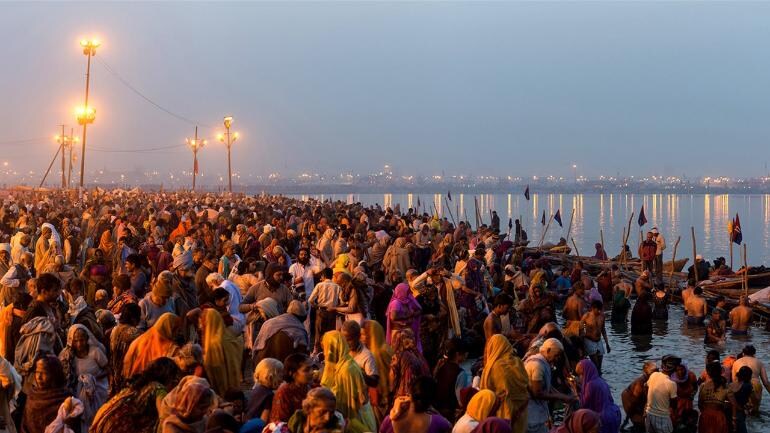Kumbh Mela, one of the world’s largest religious gatherings, has historically been a sacred event where millions of Hindus converge at the Triveni Sangam—the confluence of the Ganga, Yamuna, and the mythical Saraswati—for a ritualistic dip believed to cleanse them of sins. However, in the current socio-political climate of India, this grand event is taking on a new dimension, emerging as a unifying force for the Hindu community amid growing polarization.
Kumbh Mela rotates among four sacred cities—Prayagraj, Haridwar, Nashik, and Ujjain—each hosting the event based on astrological calculations. A full Kumbh Mela occurs every 12 years, while a Maha Kumbh Mela, like the ongoing 2025 ritual, happens once every 144 years, making it an extraordinarily significant occasion.
The origins of Kumbh Mela trace back to Hindu mythology, particularly the legend of the Samudra Manthan (churning of the ocean), where gods and demons fought for the nectar of immortality. According to legend, four drops of the nectar fell at these sacred sites, sanctifying them for eternity. For devout Hindus, bathing in these rivers during Kumbh Mela is a pathway to spiritual liberation (moksha).
Unlike previous editions, the 2025 Maha Kumbh Mela arrives at a time of heightened political and religious discourse in India. The event, scheduled from January 13 to February 26, proved not just to be a religious congregation but a demonstration of Hindu solidarity against perceived threats to their cultural and religious identity.

In recent years, India has witnessed rising tensions fuelled by minority Muslim fundamentalism, with radical elements threatening to reshape the country’s socio-political landscape. More concerning is the tacit support extended to such elements by opposition parties like the Congress, Communists, and certain regional factions, viewing them as essential ‘vote banks’ for their survival. This has inadvertently led to an awakening among Hindus, fostering a sense of unity against what they see as an organized effort to undermine their majority status.
The Kumbh Mela’s scale and spiritual magnetism have traditionally made it a cultural phenomenon, but this time, it is becoming a political undercurrent. The event symbolizes a Hindu resurgence, with growing awareness of attempts to divide them through caste-based politics. The Opposition’s push for a caste census, aimed at fracturing Hindu unity, appears to be backfiring, as seen in recent state assembly election results, where the BJP made significant gains.
Nowhere is this shift more visible than in Delhi, where the BJP secured a decisive victory, dealing a blow to the Arvind Kejriwal-led Aam Admi Party (AAP) and the Congress, besides its allies. Similarly, in Uttar Pradesh, the Samajwadi Party, heavily reliant on minority votes, finds itself on shaky ground. Even in West Bengal, Mamata Banerjee, once a fierce critic of the BJP, seems to be reconsidering her stance, distancing herself from the Congress-led opposition.
The growing Hindu consolidation poses a significant challenge to regional parties that have long thrived on identity-based politics. In Tamil Nadu, where Dravidian parties dominate, it remains to be seen whether the tide of Hindu unification will shake their political foundations. However, with a national shift towards Hindu consciousness, their long-standing grip on Tamil politics may face unprecedented challenges shortly.
As millions gather at the Triveni Sangam for the Maha Kumbh Mela 2025, it is more than just a religious spectacle—it is a moment of collective realization for Hindus across the country. The event represents not just faith and tradition but also a powerful message: the Hindu majority is no longer willing to be fragmented by divisive politics. Whether this newfound unity reshapes India’s political landscape remains to be seen, but one thing is certain—Kumbh Mela 2025 will be remembered as a pivotal moment in India’s history.





